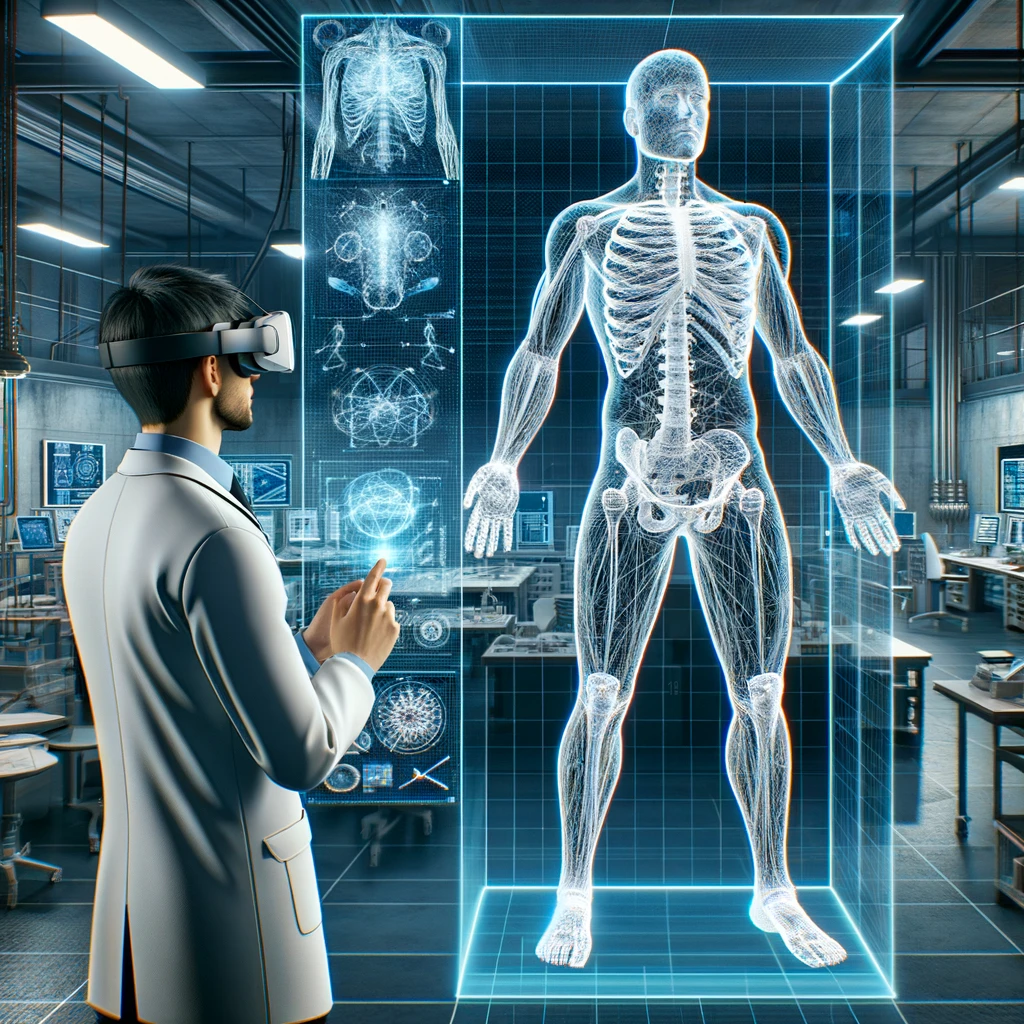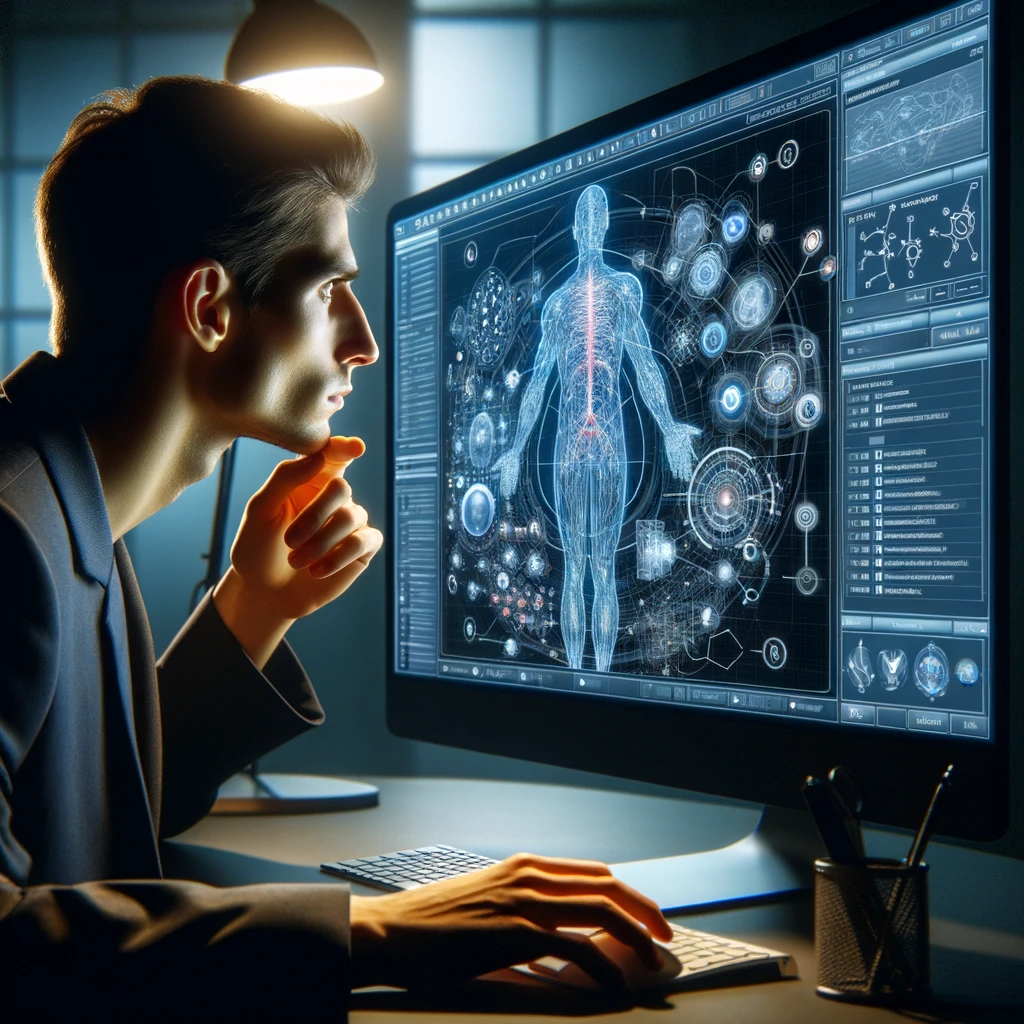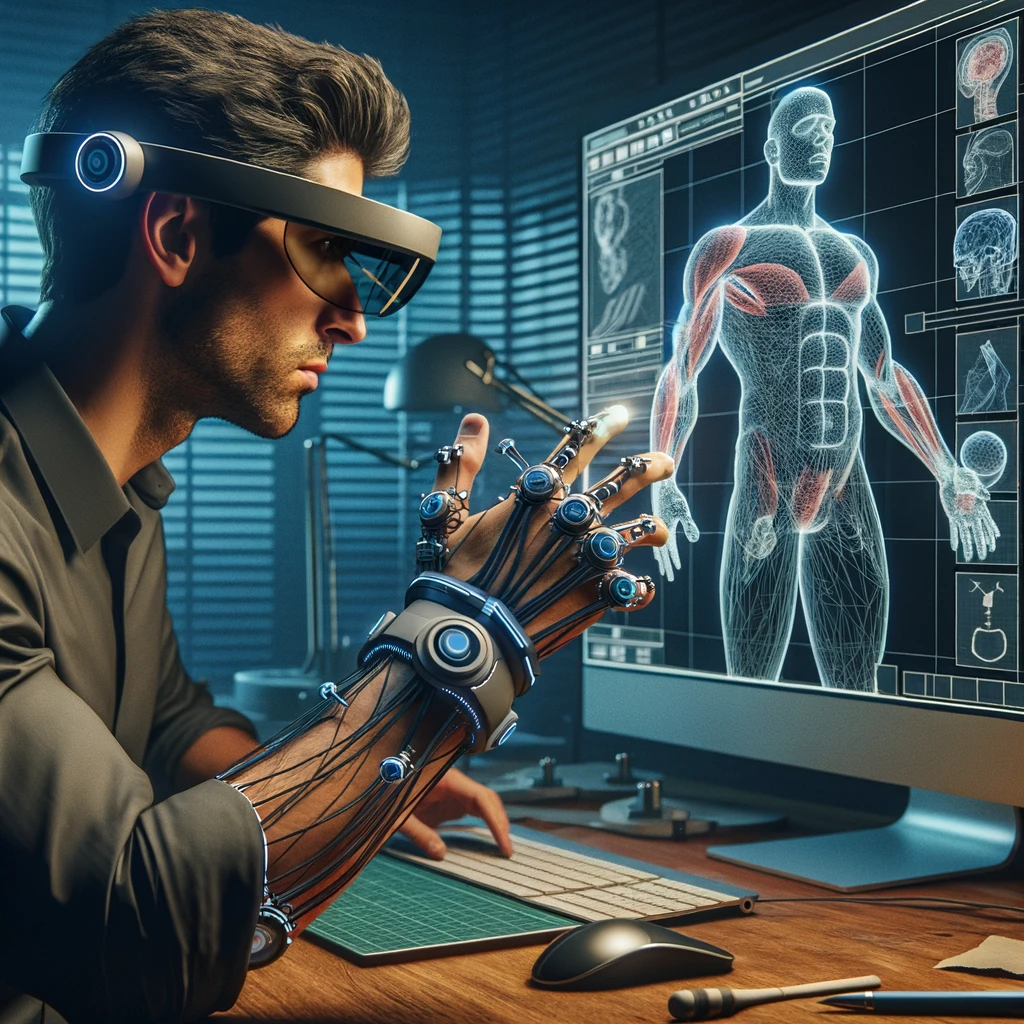Life in the Cyber Age is not what it was 200 years ago

Modern-day life is significantly more complex than life was 200 years ago, with a multitude of factors impacting people’s health in ways that were not prevalent in the past. Here’s a comparison highlighting some of the complexities of contemporary living:
1. Technological Advancements:
- Now: Constant connectivity, digital devices, and screen time are integral to daily life.
- Then: Life was predominantly analog, with minimal exposure to screens and digital devices.
2. Sedentary Lifestyles:
- Now: Many jobs involve prolonged sitting, and leisure activities often include screen-based entertainment.
- Then: Physical labor was a significant part of daily life, and leisure activities were more physically active.
3. Dietary Changes:
- Now: Processed foods, high sugar content, and fast food are prevalent.
- Then: Diets were often based on locally sourced, whole foods with less processed options.
4. Environmental Pollution:
- Now: Increased exposure to air pollution, chemicals, and environmental toxins.
- Then: Less industrialization led to cleaner air and less exposure to synthetic substances.
5. Stress and Work Pressure:
- Now: High-pressure work environments, tight schedules, and constant connectivity.
- Then: Work was often more physically demanding, but there was less pressure from constant connectivity.
6. Global Connectivity:
- Now: Immediate access to global information and news can contribute to information overload.
- Then: Information was limited to local sources and spread over a more extended period.
7. Social Dynamics:
- Now: Social media, virtual connections, and online interactions influence daily life.
- Then: Social interactions were primarily face-to-face within local communities.
8. Healthcare Complexity:
- Now: Advanced medical treatments and interventions come with complex decision-making.
- Then: Medical interventions were limited, and healthcare decisions were simpler.
9. Economic Pressures:
- Now: Global economic pressures, job insecurity, and financial stress are common.
- Then: Economic structures were more localized, and the pace of change was slower.
10. Education and Information Access:
- Now: Access to vast amounts of information requires continuous learning and adaptation.
- Then: Information access was limited, and education was often more static.
11. Mental Health Awareness:
- Now: Increased awareness of mental health challenges and the impact of stress.
- Then: Mental health was less understood and often not prioritized.
12. Transportation and Urbanization:
- Now: Increased reliance on automobiles, urban living, and sedentary transportation.
- Then: More reliance on walking, horses, and less urbanization.
13. Diversity of Food Supply:
- Now: A globalized food supply with a wide variety of options year-round.
- Then: Seasonal and locally sourced food options were more prevalent.
In summary, the complexities of modern-day life, influenced by technological, societal, economic, and environmental changes, have introduced new challenges to health. While advancements have improved various aspects of life, they have also brought about unique stressors and health considerations that differ significantly from the lifestyle of people 200 years ago. Understanding and adapting to these complexities are essential for maintaining health and well-being in the contemporary world.
There are infinite factors playing into your system...
innumerable variables that were not even previously in existence in all of the thousands of years of human history...

The human being is a complex system and now with life being more complicated than ever before, it can be difficult to sort through and evaluate all the choices we are faced with daily. But luckily, endless scientific discoveries have been made and multitudes of studies have been done, resulting in a wealth of information. Now with the analytical power of AI, this information can strategically be used to help us understand how to navigate more smoothly in a world overwhelmed by choices and confusing distractions. XSE initiates critical and creative thinking skills for masterly analysis and your own decisions of optimal choices, while opening your eyes to new horizons and possibilities of sourcing, maximizing your systems potential. Additionally, presenting surprising research and facts on the operation of your system can assist in advancement.
In XSE You are the Primary System of Interest

In XSE you are the primary system of interest yourself, while at the same time, you are also the person in charge of maintaining your system, a position also known as the sustaining systems engineer, and whether or not you accept this position in your life, it is yours alone, and no matter what, you can’t hand the responsibility over to anyone. Since you are not the one who designed or developed your system of interest in the first place, as the sustaining systems engineer, you should seek to know and understand your system of interest that you are responsible for maintaining. If you don’t understand the essentials of what you are dealing with, whether it’s the building blocks of the system, or the sub-systems and how they work together to create the smooth-machine effect, it may be more difficult to excel in your position of authority over your own system. You either understand your job and do it well, or you may end up with a broken down, stopped-up system, and ultimately, system failure. An initial step to take as a sustaining systems engineer or Pilot SE of yourself, is to Reverse engineer the system that you are in charge of.
The Human is innately a complex system, but to compound that complexity is the myriad of modern complexity...

Modern living is characterized by a myriad of complex factors that can contribute to challenges, stressors, and health issues for individuals. Understanding the human body becomes essential in navigating and mitigating the impact of these factors. Here are some ways in which the complexities of modern living can influence health and why understanding the human body is crucial:
Environmental Factors:
- Complexity: Exposure to pollutants, toxins, and environmental stressors is prevalent in modern urban environments.
- Health Impact: Understanding how the body processes and reacts to environmental factors is vital for preventing and managing conditions related to environmental exposures.
Lifestyle Choices:
- Complexity: Sedentary lifestyles, poor dietary choices, and irregular sleep patterns are common in modern living.
- Health Impact: Understanding how these lifestyle factors affect metabolism, cardiovascular health, and overall well-being is crucial for promoting healthy habits.
Technological Influence:
- Complexity: Prolonged screen time, digital overload, and constant connectivity can impact mental health and sleep patterns.
- Health Impact: Knowledge of how technology affects brain function, circadian rhythms, and stress responses is necessary for managing the consequences on mental and physical health.
Workplace Stress:
- Complexity: Demanding work schedules, tight deadlines, and workplace stress contribute to mental and physical strain.
- Health Impact: Understanding the body’s stress response system and developing coping mechanisms is essential for preventing stress-related health issues.
Social Pressures:
- Complexity: Societal expectations, social comparisons, and peer pressures can contribute to mental health challenges.
- Health Impact: Understanding psychological well-being and the mind-body connection is crucial for managing stressors related to social pressures.
Dietary Challenges:
- Complexity: Access to processed foods, high sugar content, and irregular eating patterns are common.
- Health Impact: Understanding nutritional needs, digestion, and metabolic processes is essential for making informed dietary choices that support overall health.
Medical Advances and Challenges:
- Complexity: Advances in medical technology and treatments bring complex healthcare decisions.
- Health Impact: Understanding medical interventions, potential side effects, and making informed healthcare choices becomes essential for maintaining health.
Global Pandemics:
- Complexity: Emergence of infectious diseases and global health crises introduce uncertainty and stress.
- Health Impact: Knowledge of the immune system, preventive measures, and healthcare protocols is crucial for navigating and managing health during pandemics.
Financial Stress:
- Complexity: Economic pressures, job insecurity, and financial stress are prevalent.
- Health Impact: Understanding the link between stress, mental health, and physical health is vital for mitigating the impact of financial stressors.
Chronic Health Conditions:
- Complexity: Rising rates of chronic conditions necessitate ongoing management and lifestyle adjustments.
- Health Impact: Understanding the physiology of chronic conditions and adopting strategies for prevention and management is crucial for long-term well-being.
In summary, the intricate factors associated with modern living can contribute to health challenges, making it essential for individuals to understand the complexities of the human body. This understanding empowers individuals to make informed lifestyle choices, navigate stressors, and adopt strategies that support overall health and well-being.
AI can help sort through, analyze, present insight, and even simplify...

Artificial Intelligence (AI) can be a powerful tool for sorting through and analyzing the myriad complexities that could negatively impact a person’s life. Here’s how AI can be utilized for this purpose:
Data Aggregation:
- Role of AI: AI can gather and aggregate vast amounts of data from various sources, including social media, health records, personal devices, and more.
- Benefits: This enables a comprehensive understanding of different aspects of a person’s life, from health metrics to social interactions.
Pattern Recognition:
- Role of AI: AI algorithms are adept at identifying patterns within large datasets.
- Benefits: By recognizing patterns, AI can highlight trends, correlations, and potential causes for negative impacts, providing insights that might not be apparent through traditional analysis.
Personalized Insights:
- Role of AI: AI can tailor its analysis to individual characteristics, preferences, and behaviors.
- Benefits: This personalization allows for more accurate and relevant insights, understanding the unique factors affecting an individual.
Sentiment Analysis:
- Role of AI: Natural Language Processing (NLP) techniques enable AI to analyze text data for sentiment and emotional cues.
- Benefits: Understanding the emotional context can provide valuable insights into how external factors may be impacting a person’s mental well-being.
Health Monitoring:
- Role of AI: AI can process health-related data, such as wearable device metrics, medical records, and lifestyle information.
- Benefits: It enables continuous health monitoring, helping to identify potential health issues or correlations between lifestyle choices and well-being.
Behavioral Analysis:
- Role of AI: AI can analyze behavioral data, such as daily routines, online interactions, and activity patterns.
- Benefits: Behavioral analysis can reveal habits, stress triggers, or changes in behavior that might contribute to negative impacts.
Predictive Modeling:
- Role of AI: Machine learning algorithms can create predictive models based on historical data.
- Benefits: These models can forecast potential negative impacts, allowing for proactive interventions or adjustments to prevent or mitigate adverse outcomes.
Intervention Strategies:
- Role of AI: AI systems can suggest personalized interventions or strategies based on the identified factors.
- Benefits: Providing actionable recommendations empowers individuals to make positive changes in their lives, whether related to health, relationships, or lifestyle.
Continuous Learning:
- Role of AI: AI systems can continuously learn and adapt based on new data inputs and user feedback.
- Benefits: This adaptability ensures that the analysis remains relevant over time, accommodating changes in the individual’s circumstances and environment.
Privacy and Ethical Considerations:
- Role of AI: Implementing privacy-preserving techniques and ethical frameworks is crucial.
- Benefits: Ensuring the responsible use of AI protects individuals’ sensitive information and maintains trust in the technology.
While AI offers substantial benefits, it’s essential to approach its application in personal analysis with careful consideration of ethical, privacy, and security concerns. Responsible AI implementation involves transparency, user consent, and adherence to regulatory standards to ensure that the technology enhances well-being without compromising individual rights and autonomy.
The information presented by AI is then yours to process, scrutinize, and investigate with critical and creative thinking, to assist you in making your own informed decisions.

The beauty of AI lies in its ability to present and analyze vast amounts of information, while still preserving the human’s sovereignty to further analyze the data and make informed decisions. Here are some aspects that highlight this beauty:
Efficiency and Speed:
- AI Role: AI excels at processing large datasets quickly, identifying patterns, and presenting relevant information.
- Human Role: Humans can leverage AI’s efficiency to access and comprehend complex information rapidly, saving time and effort.
Data Synthesis:
- AI Role: AI can synthesize diverse data sources, providing a holistic view of information.
- Human Role: Humans can then synthesize this consolidated information, combining AI insights with personal knowledge and context.
Unbiased Analysis:
- AI Role: AI algorithms can analyze data without inherent biases, enhancing objectivity.
- Human Role: Humans can critically evaluate the results, considering contextual nuances and applying ethical considerations.
Pattern Recognition:
- AI Role: AI excels at recognizing patterns and correlations in vast datasets.
- Human Role: Humans, with their contextual understanding, can interpret patterns in a way that aligns with their unique experiences and intuition.
Personalized Insights:
- AI Role: AI can provide personalized recommendations based on individual data.
- Human Role: Individuals retain the sovereignty to assess these recommendations against their personal values, preferences, and unique circumstances.
Enhanced Decision-Making:
- AI Role: AI assists in decision-making by presenting relevant information and potential outcomes.
- Human Role: Humans remain in control of the final decisions, incorporating emotional intelligence, intuition, and ethical considerations that AI may lack.
Continuous Learning:
- AI Role: AI systems continuously learn and adapt based on new data.
- Human Role: Humans benefit from AI’s evolving insights, incorporating the latest information into their decision-making processes.
Empowerment and Autonomy:
- AI Role: AI empowers individuals with information and insights.
- Human Role: Humans maintain autonomy, deciding how to use and act upon the information provided by AI.
Collaborative Decision-Making:
- AI Role: AI can serve as a collaborative tool, fostering teamwork in decision-making processes.
- Human Role: Humans collaborate with AI, leveraging each other’s strengths for more informed and well-rounded decisions.
Transparent and Explainable AI:
- AI Role: Efforts in creating transparent and explainable AI systems allow users to understand how decisions are reached.
- Human Role: Humans can critically assess and challenge AI recommendations, ensuring transparency and accountability.
In essence, the beauty lies in the symbiotic relationship between AI and humans. AI serves as a powerful tool, augmenting human capabilities and providing valuable insights, while humans retain the sovereignty to interpret, question, and ultimately make decisions aligned with their values and goals. This collaboration harnesses the strengths of both AI and human intelligence, leading to more informed, ethical, and effective decision-making.

